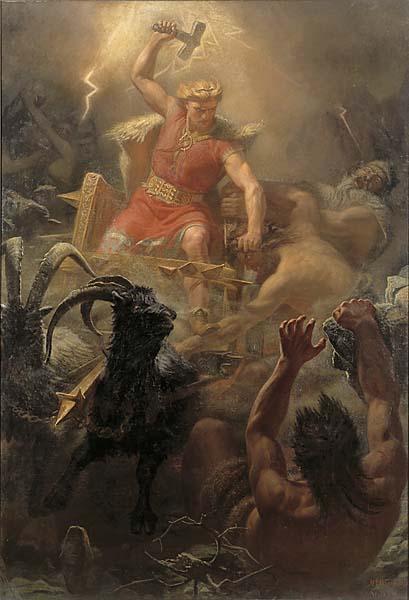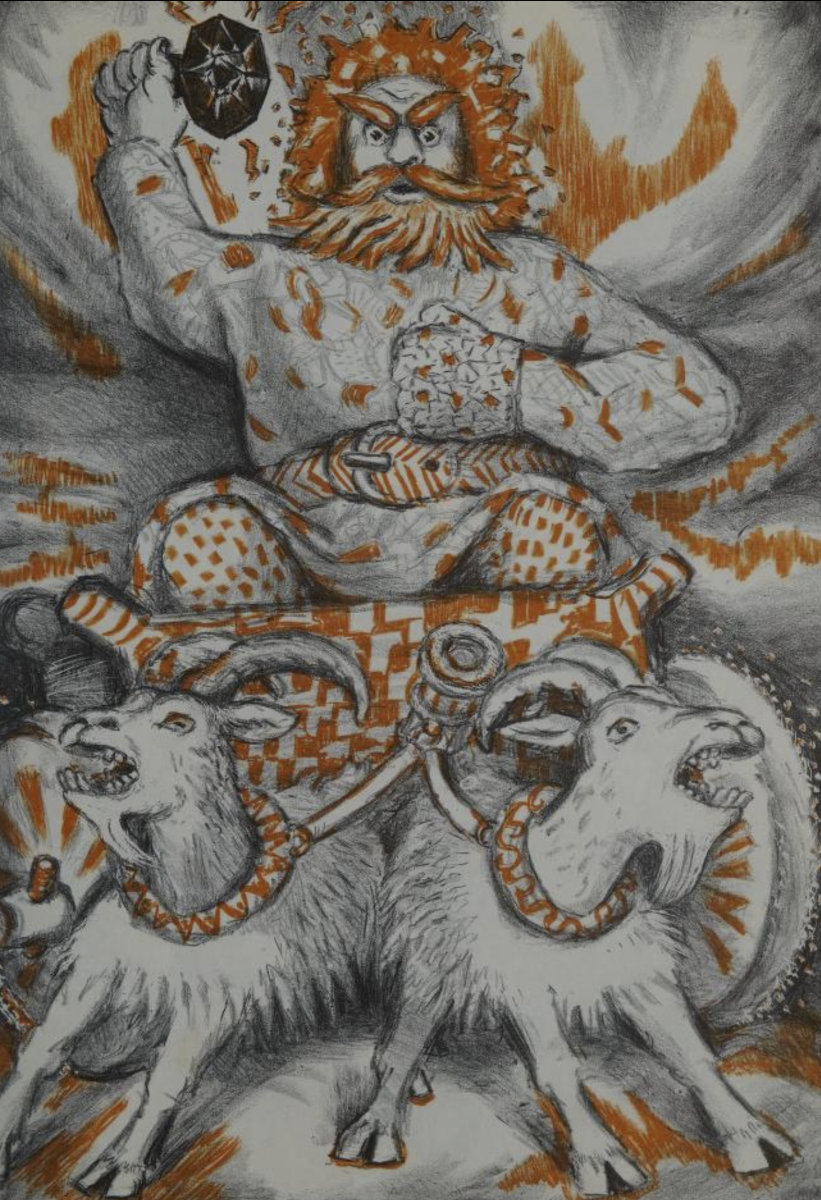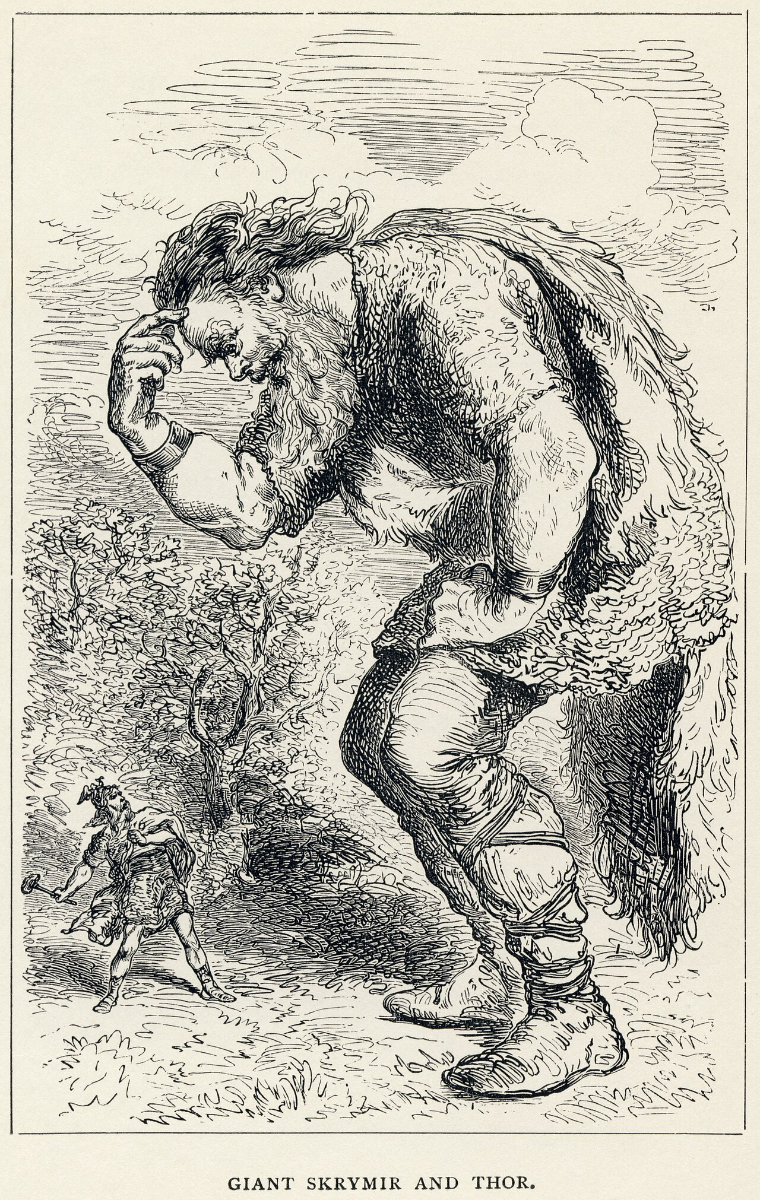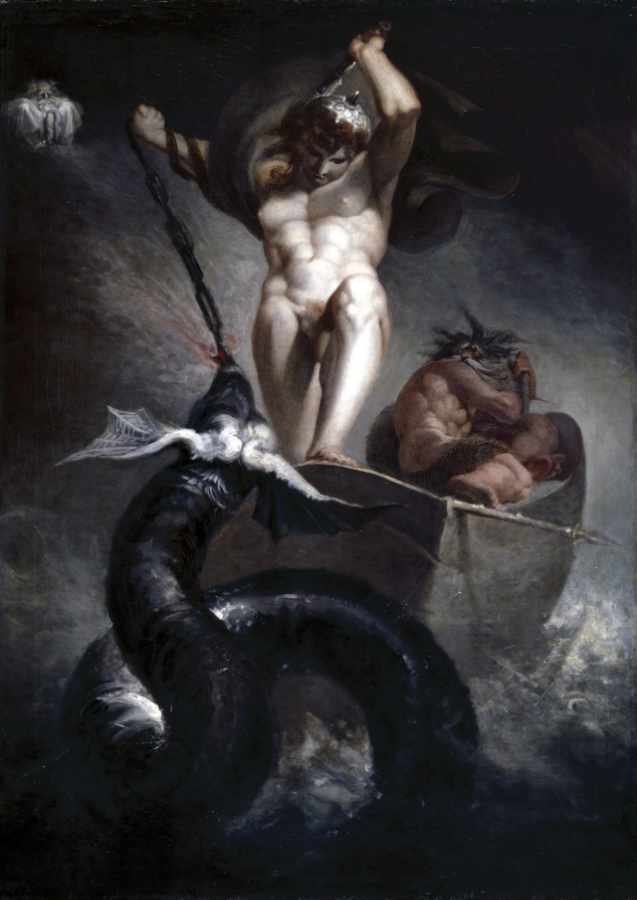Thor is a prominent god in Germanic paganism. In Norse mythology, he is a hammer-wielding god associated with lightning, thunder, storms, sacred groves and trees, strength, the protection of humankind, hallowing, and fertility. Thor is a prominently mentioned god throughout the recorded history of the Germanic peoples, from the Roman occupation of regions of Germania, to the Germanic expansions of the Migration Period, to his high popularity during the Viking Age, when, in the face of the process of the Christianization of Scandinavia, emblems of his hammer, Mjölnir, were worn and Norse pagan personal names containing the name of the god bear witness to his popularity. Due to the nature of the Germanic corpus, narratives featuring Thor are only attested in Old Norse, where Thor appears throughout Norse mythology. Norse mythology, largely recorded in Iceland from traditional material stemming from Scandinavia, provides numerous tales featuring the god. In these sources, Thor bears at least fifteen names, is the husband of the golden-haired goddess Sif, is the lover of the jötunn Járnsaxa, and is generally described as being light-skinned, with “hair fairer than gold” and red beard, however some scholars dismiss the notion that Thor had a red beard. With Sif, Thor fathered the goddess (and possible valkyrie) Thrud; with Járnsaxa, he fathered Magni; with a mother whose name is not recorded, he fathered Móði, and he is the stepfather of the god Ullr. Thor is the son of Odin and Jörð, by way of his father Odin, he has numerous brothers, including Baldr. Thor has two servants, Þjálfi and Röskva, rides in a cart or chariot pulled by two goats, Tanngrisnir and Tanngnjóstr (that he eats and resurrects), and is ascribed three dwellings (Bilskirnir, Þrúðheimr, and Þrúðvangr). Thor wields the hammer Mjölnir, wears the belt Megingjörð and the iron gloves Járngreipr, and owns the staff Gríðarvölr. Thor’s exploits, including his relentless slaughter of his foes and fierce battles with the monstrous serpent Jörmungandr—and their foretold mutual deaths during the events of Ragnarök—are recorded throughout sources for Norse mythology.
| Alias Thor, Thuner, Thunar, Donar |
| Real Names/Alt Names Thor |
| Characteristics Hero, Myths & Legends, Deity, Electricity Manipulator, Immortal, Prehuman Epoch, Scandinavian |
| Creators/Key Contributors Unknown |
| First Appearance Prose Edda (c. 1220 CE) |
| First Publisher ○ |
| Appearance List Literary: Prose Edda (c. 1220 CE), Poetic Edda (c. 1270 CE), The Heroes of Asgard: Tales from Scandinavian Mythology by Keary and Keary (1909), In the Days of Giants: A Book of Norse Tales by Abbie Farwell Brown (1902). Comics: Kid Eternity #2. |
| Sample Read The Heroes of Asgard: Tales from Scandinavian Mythology [PG] |
| Description Thor is a prominent god in Germanic paganism. In Norse mythology, he is a hammer-wielding god associated with lightning, thunder, storms, sacred groves and trees, strength, the protection of humankind, hallowing, and fertility. Thor is a prominently mentioned god throughout the recorded history of the Germanic peoples, from the Roman occupation of regions of Germania, to the Germanic expansions of the Migration Period, to his high popularity during the Viking Age, when, in the face of the process of the Christianization of Scandinavia, emblems of his hammer, Mjölnir, were worn and Norse pagan personal names containing the name of the god bear witness to his popularity. Due to the nature of the Germanic corpus, narratives featuring Thor are only attested in Old Norse, where Thor appears throughout Norse mythology. Norse mythology, largely recorded in Iceland from traditional material stemming from Scandinavia, provides numerous tales featuring the god. In these sources, Thor bears at least fifteen names, is the husband of the golden-haired goddess Sif, is the lover of the jötunn Járnsaxa, and is generally described as being light-skinned, with “hair fairer than gold” and red beard, however some scholars dismiss the notion that Thor had a red beard. With Sif, Thor fathered the goddess (and possible valkyrie) Thrud; with Járnsaxa, he fathered Magni; with a mother whose name is not recorded, he fathered Móði, and he is the stepfather of the god Ullr. Thor is the son of Odin and Jörð, by way of his father Odin, he has numerous brothers, including Baldr. Thor has two servants, Þjálfi and Röskva, rides in a cart or chariot pulled by two goats, Tanngrisnir and Tanngnjóstr (that he eats and resurrects), and is ascribed three dwellings (Bilskirnir, Þrúðheimr, and Þrúðvangr). Thor wields the hammer Mjölnir, wears the belt Megingjörð and the iron gloves Járngreipr, and owns the staff Gríðarvölr. Thor’s exploits, including his relentless slaughter of his foes and fierce battles with the monstrous serpent Jörmungandr—and their foretold mutual deaths during the events of Ragnarök—are recorded throughout sources for Norse mythology. |
| Source Thor – Wikipedia |




